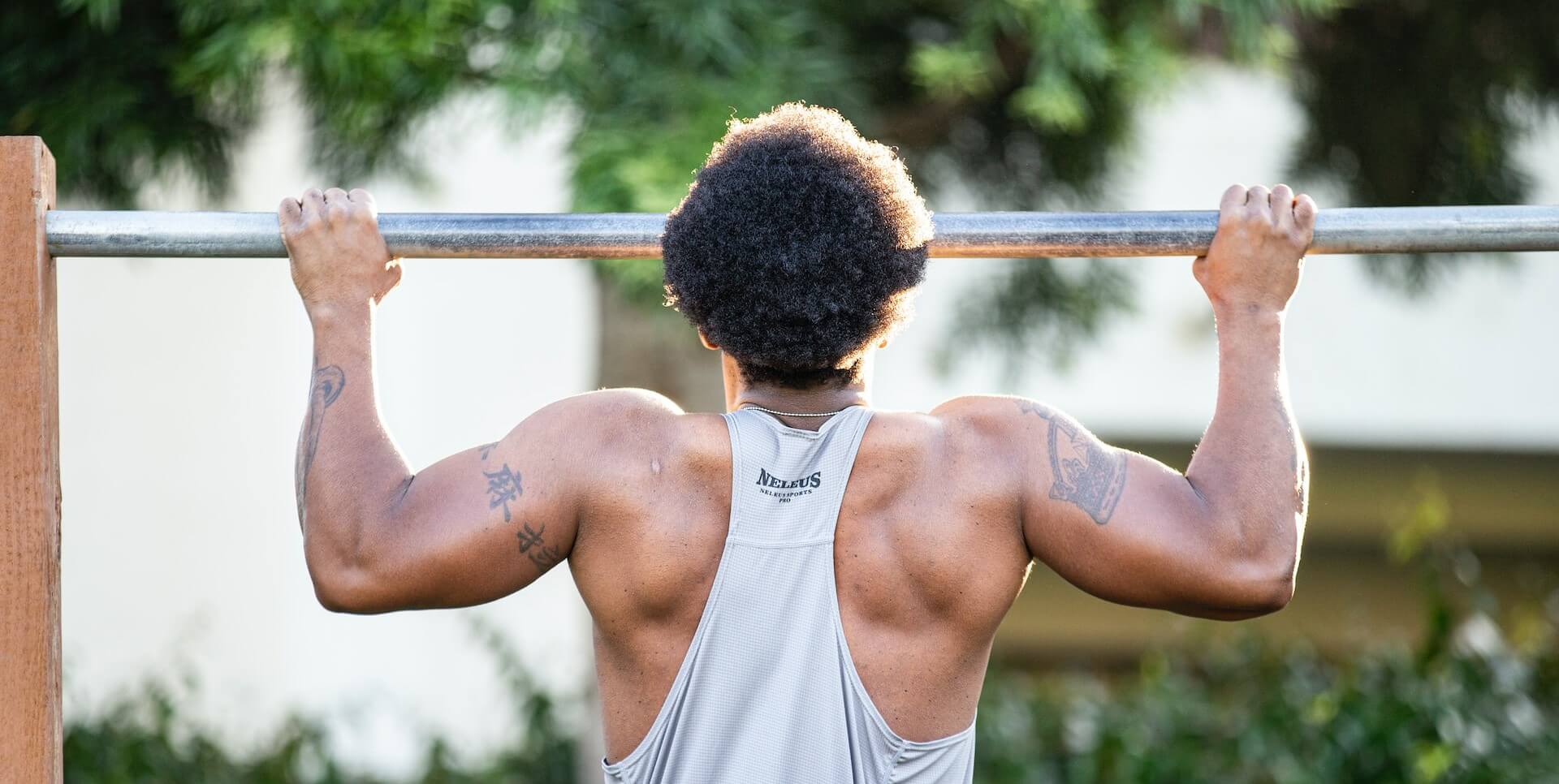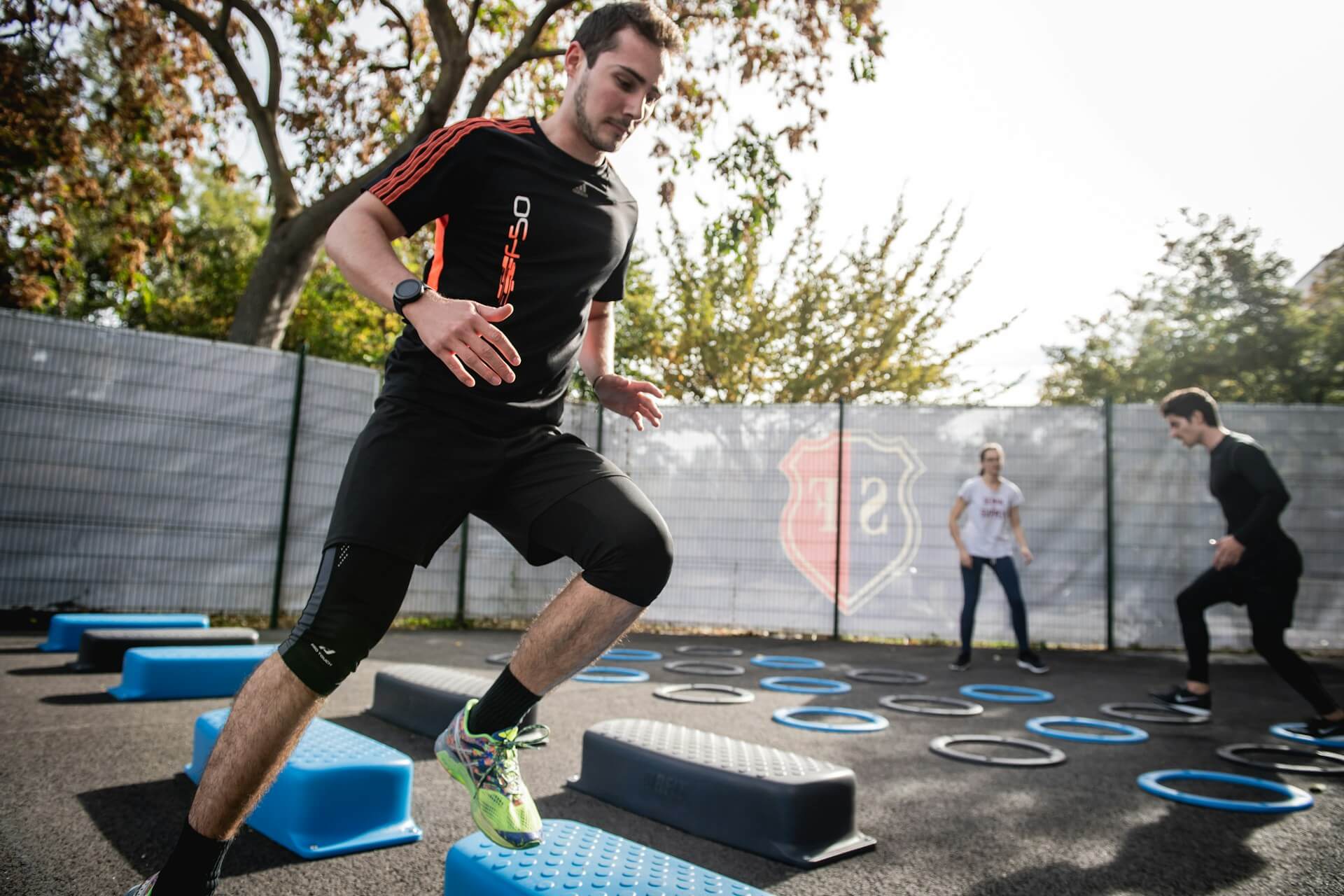How to Make a DIY Pullup Bar: Steps and Tips
Mar 28, 2023

As an Amazon Associate, Modded gets commissions for purchases made through links in this post.
Pullups are one of the greatest simple-yet-effective exercises out there. The only equipment you need is a bar that can support your weight, so why not make your own to use at home? A DIY pullup bar can save you some trips to the gym and may be cheaper than the power cages you can buy online.
Here’s how you can make your own pullup bar, as well as some tips to get the most out of it.
Making a DIY Pullup Bar
Getting in shape can take a long time, but building a DIY pullup bar to help is relatively easy. Just follow these five steps.
1. Gather the Materials
The first step is to gather all the tools and materials you’ll need. This can vary slightly depending on what kind of pullup bar you want. For a ceiling-mounted bar, you’ll need:
- Two pressure-treated 2x4s at least 18 inches long
- A 36-inch galvanized steel pipe, one inch in diameter
- Two galvanized steel pipe caps that fit your pipe
- Wood screws
- A 1.25-inch spade drill bit
- A power drill
If you want to build an outdoor, free-standing pullup bar, you’ll need:
- Two pressure-treated 4x4s, roughly 10 feet long
- A 36-inch galvanized steel pipe, one inch in diameter
- Two galvanized steel pipe caps that fit your pipe
- A shovel
- A 1.25-inch spade drill bit
- A power drill
- Two 80-pound bags of concrete mix
- Two 5-gallon buckets
Optionally, you may want some grip tape, especially if you’re building an outdoor pullup rig. Steel structures can reach up to 185 degrees in the summer sun, so you may want to wrap the bar to avoid burns.
2. Cut the Boards
Once you have all the materials together, you’ll cut some holes in the boards where the pipe will go. Regardless of what kind of DIY pullup bar you’re making, this process is the same.
Measure three to four inches from one end of each board and mark that point. Attach your spade bit to your power drill and cut a hole in that spot. If you’re using 2x4s, make sure this hole is on the 4-inch side.
If you’re making a ceiling-mounted bar, hold the 2x4s up to where you’re planning on mounting them. You may have to cut them down on the side without a hole to give yourself more room when using the bar.
3. Mount the Boards
Next, it’s time to mount the boards you just cut. For a ceiling-mounted pullup bar, find two exposed ceiling joists, which should be roughly three feet apart. Use three wood screws in a triangle to join each board hole-side down to the joists. Make sure they’re close enough to each other for your pipe to fit between them.
Mounting a free-standing pullup bar is a bit more involved. Start by digging two holes roughly three feet deep. The centers of these holes should be as far apart from each other as your steel pipe’s length. Place your buckets at the bottom of these holes, ensuring they fit snugly with no movement.
Refer to your concrete mix to see how much water to add, then carefully mix your concrete, being careful not to add too much water. Fill the buckets in the holes with the wet cement, then place the posts hole-side up in their centers. Use a level to make sure they’re straight. You may have to prop them up as the concrete dries.
4. Attach the Bar
After your boards are secure on the ceiling joists or in the dried concrete, you can place the bar between them. Thread the pipe through the holes you cut earlier so there’s an equal amount hanging out on each side. If it’s not long enough, don’t worry. You can always run out and buy a longer pipe.
With the pipe in place, put a cap on each end so it won’t slide out of the holes. If you want to add some grip tape to the bar, now’s the time to do it. You can either wrap the entire length of the pipe or mark a comfortable hand position for you and wrap those spots.
5. Test the Bar and Start Doing Pullups
From there, you’re almost ready to start using your DIY pullup bar! All that’s left is a few final checks to make sure everything is in working order.
Use a level to make sure the pipe is straight. If it isn’t, you can unmount and reattach one of the planks to make it even. If you’re building a free-standing pullup bar, do this while the concrete is still a little wet and malleable. It takes roughly 24 to 48 hours for most concrete to dry completely, but it’ll be easier to work with within a few hours of pouring it.
With your concrete dry and your bar level, give it a few good tugs to make sure it’s solid. From there, grip the pipe and start doing pullups to build your shoulders and lats!
Tips to Keep in Mind When Building a DIY Pullup Bar
Those five steps are all you need to build a DIY pullup bar, but there are some smaller things to consider to make the most of it. First, take some time to decide what type of rig you want.
A free-standing bar is more expensive and complicated and requires yard space, but it’s more versatile. Ceiling-mounted bars are cheap and easy, but you can’t do exercises like muscle-ups on them.
When picking a spot for your pullup bar, make sure you choose somewhere with space for your head. Experts recommend leaving at least 18 inches between the bar and the ceiling to give you room to move around.
As with any home project, go by the motto “measure twice, cut once” when you’re working. Measure your board length, the distance between posts, above-bar clearance and bar levelness repeatedly as you work to avoid time-consuming mistakes.
Save Some Money and Get Fit With Your Own DIY Pullup Bar
Now that you know how to build your own DIY pullup bar, you can take your home gym game to the next level. Follow our guide on building a DIY deadlift platform to accompany it, and before long, you won’t need a gym membership at all. Actually using the equipment and getting fit is the hardest part. When you know the steps, the construction is fairly easy.






